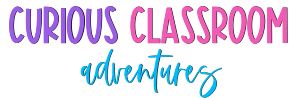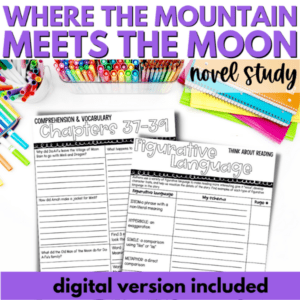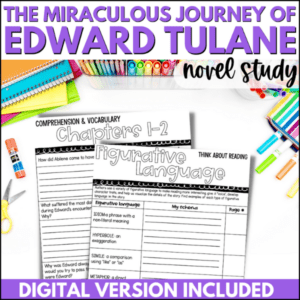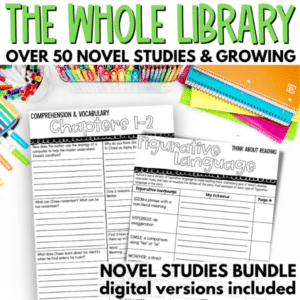As a bookworm, I have always found comfort in the pages of novels and learned to love annotating in books as well. Reading can be a fun, exciting, and engaging way to learn new things and delve into imaginative worlds. There is also a lot to think about and unpack for our young literature readers!
Vocabulary can be complex, themes can be difficult to understand, and sometimes trying to keep track of it all can feel overwhelming. That’s where teaching students to annotate texts can help! Let’s explore the benefits of text annotation and share some simple and effective strategies you can use to introduce the idea of text annotation to young readers.
Why Should Elementary Students Learn to Annotate Texts?
First, let’s discuss the benefits of annotating in books. Text annotation refers to the practice of marking, underlining, or writing notes in the margins of a book or text. You might be thinking one of two things: this sounds like scandalous vandalism OR this sounds like a time-consuming and unnecessary task. In reality, has numerous benefits. For instance, when readers annotate, they actively engage with the text and make it their own. This not only helps with memory retention but also allows readers to think critically about the content.
Moreover, when readers are annotating in books, they can easily identify themes, understand character motivations, and highlight important plot points. In addition, annotating can help readers keep track of the meaning and usage of new vocabulary words, making it easier to use them in their own writing and discussions. Furthermore, annotating in books can also help readers generate their own questions about the text and identify holes in their understanding, leading to further exploration and a deeper understanding of the content.
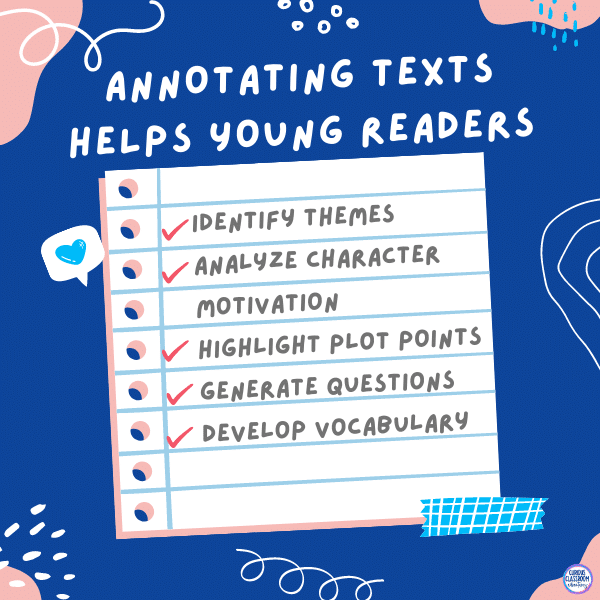
Introduce Annotating in Books to Young Readers
Now that we have established the benefits of annotating in books, let’s talk about how teachers can introduce it to young readers. One strategy that teachers can use is to model the process of annotating in books. Start by choosing a book that will captivate your students and provide the incentive they need to keep going while they practice this new skill. If you need some ideas check out this leveled list of chapter books!
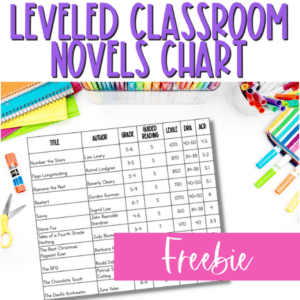
Once you have your class book chosen, start by reading a passage aloud while your students follow along silently. As you go, model the process of annotation, highlighting key details and jotting down notes in the margins. Discuss your annotations with the class, and ask them to do the same for a few pages.
My Favorite Strategies for Annontating Texts with Elementary Students
The first and most important strategy is to choose a book with lots of literary elements, great themes, and dynamic characters. That way, students will have plenty of opportunities to practice annotating in books. Two of my favorites are Where the Mountain Meets the Moon and The Miraculous Journey of Edward Tulane. With rich storylines and tons of imagery, even the student who struggles the most is sure to find a few things to annotate!
Another strategy is to provide students with annotation prompts. These prompts can come in the form of questions that encourage deeper thinking and critical analysis of the text. This is where having a quality novel study comes in handy!
For example, teachers can use the prompts from the novel study comprehension or reading skill pages, and ask students to underline key sentences or phrases that they can use to answer comprehension questions or highlight figurative language in their books that they can record as part of their novel study assignment. By using novel studies you help students develop a more structured approach to annotating in books and keep their annotations organized.
The next strategy is to make annotating in books fun! Encourage students to use different colors for different types of annotations, or to draw pictures in the margins to help them remember key details. You could even turn annotations into a game, challenging students to find specific phrases or details in the text and annotate them accordingly.
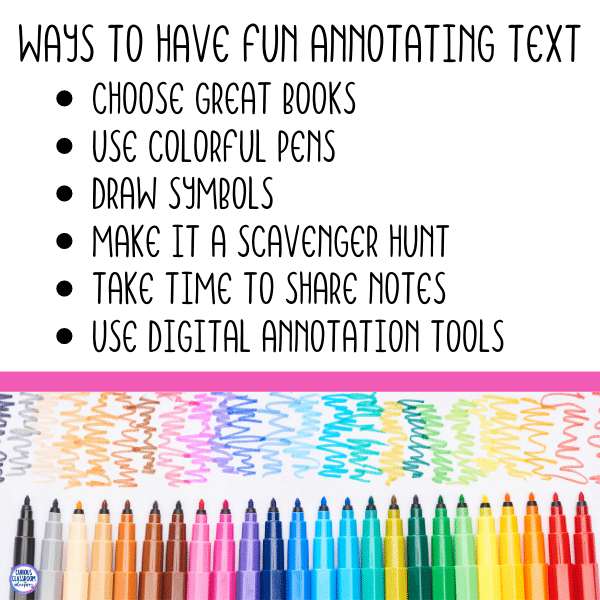
Another strategy is to keep it simple with just a few agreed-upon annotation abbreviations that everyone in the class will use. To create a common language for annotating I highly recommend reading the book Notice and Note by Beers and Probst and incorporating some simple shorthand annotation symbols as their signposts. These are simple and straightforward for kids and help them recognize important literary elements such as theme and character development. Having these few common abbreviations makes it easy for students to participate in discussions about what they’ve read.
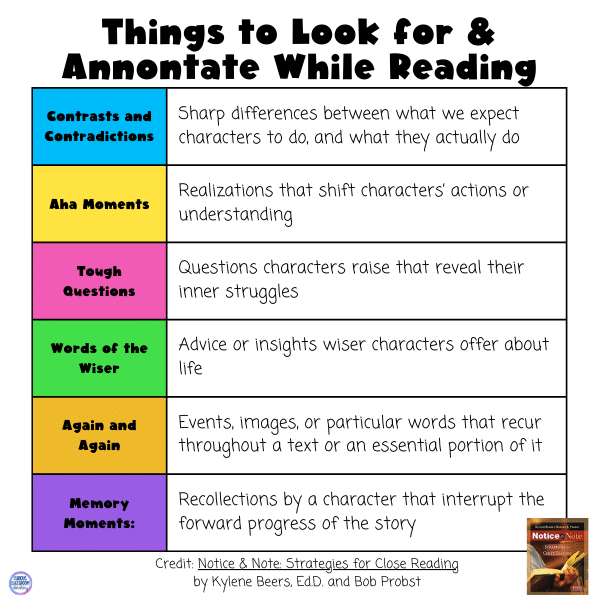
Finally, If the idea of writing in books is just too much to swallow, or if students just don’t have their own personal copies of books to write in, you can use technology to practice annotation. Tools like Google Docs and OneNote allow students to highlight and make notes on digital text. Some added benefits of digital annotation are that students can access their annotations from anywhere or use the built-in tools for collaboration to share their annotations and engage in group discussions about the text.
Annotations are a powerful tool for building reading comprehension skills in young readers. By encouraging our students to interact with the text and make connections between different parts of the material, we can help them better understand what they are reading and improve their overall comprehension skills. Introducing students to text annotation in their elementary years will give them a great foundation for future year and helps them become confident, skilled, and engaged readers for life.
